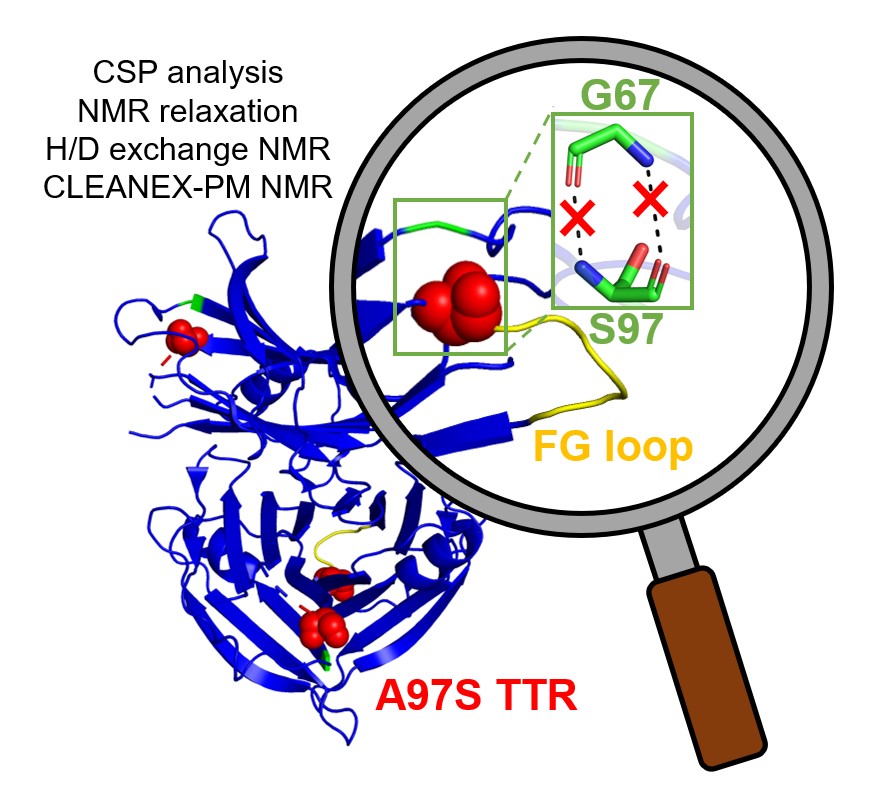Yu-Chen Feng, Sashank Agrawal, Chin-Hao Yang, Hao-ChihChang, Ling Kuo, Wen-Chung Yu, Yo-Tsen Liu,* and Tsyr-YanYu*
Chemistry - An Asian Journal

Transthyretin (TTR), a homo-tetrameric protein encoded bythe TTR gene, can lead to amyloid diseases when destabilized bymutations. The TTR-Ala97Ser (A97S) mutation is the predominantpathogenic variant found in Han-Taiwanese patients and isassociated with late-onset familial amyloid polyneuropathy (FAP),which presents a rapid progression of symptoms affecting peripheralnerves and the heart. In this study, we combined nuclear magneticresonance (NMR) spectroscopy and X-ray crystallography toinvestigate how the A97S mutation impacts the structure anddynamics of TTR. Previous X-ray analyses indicated that the FG loopexhibits increased flexibility due to the mutation, evidenced by missingelectron density and a reduced number of hydrogen bonds. Our NMRhydrogen-deuterium (H/D) exchange experiments provided additionalinsights, revealing that inter-residue hydrogen bonds among the FGloop residues are unstable in both wild-type (WT) and A97S TTR.Notably, the hydrogen bonds between G67 and S97 are unstable,influencing the stability of adjacent loops. This elongation of the FGloop is believed to contribute to increased flexibility and enhancedwater-protein proton exchange, as observed in NMR relaxation andc hemical exchange experiments. Our findings offer a comprehensiveunderstanding of how the A97S mutation affects TTR structure anddynamics, providing new insights into its amyloidogenicity
